Article
Evora, Portugal: A World Heritage Site
Author(s):
Every time I tell a friend about my many return visits to Portugal, I always say the same thing, “For me, Portugal is equally interesting to England and about one-half to one-third the price.â€
Everyone likes wealth and Portugal is no exception. In the 15th and 16th centuries it was master of the sea and the major trader with Asia from the West. Thus, tremendous wealth was brought into the country. Evora reflects that golden age. It is a walkable city that retains its Roman and Medieval walls.
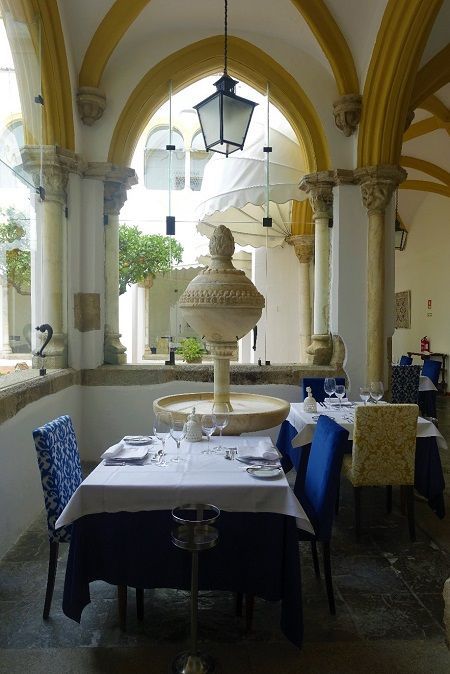
The restaurant at the Posada dos Loios in Evora, Portugal.
Every time I tell a friend about my many return visits to Portugal, I always say the same thing, “For me, Portugal is equally interesting to England and about one-half to one-third the price.” Nowhere could that be more true than Evora, a city of 50,000 inhabitants located about one and one-half hours by car Southeast of Lisbon. The city is chock full of monuments that date from Roman times to the 15th and 16th centuries when Portugal dominated the sea and the spice trade.
Beginning at our hotel, the Mara De Ar Aqueducto, it is easy to see earlier civilization’s influence on the city, even before the 15th and 16th centuries. A Roman aqueduct is the backdrop for the pool at the hotel located within 10 minutes by foot from the city center.
At the termination of that walk, the classical influence continues. There is a Roman bath within the city hall that was discovered during reconstruction.

Hotel Mar De Ar Aqueducto in Evora, Portugal. The pool is in the foreground and the Roman aqueduct is in the background.
Additionally, a Roman temple at a high point in the city, is the oldest structure in Evora. It is dated to roughly the 1st century AD. This edifice has a checkered past. It served both as a military tower and later shockingly a slaughter house. Some believe that these less than traditional uses contributed to its conservation.
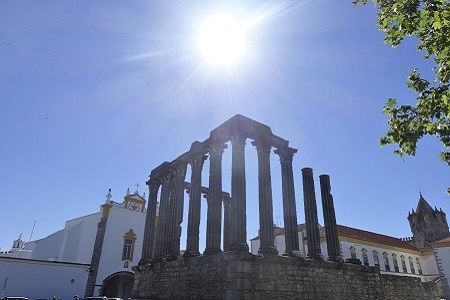
The Roman Temple in Evora.
Roman walls define the boundary of the inner city as well. In later times, the outside perimeter had to be widened because the city’s population increased. It was the 17th century French engineer, Nicolas de Langres, who laid these plans.
Across from the Roman Temple is the Evora Museum. Though small, it contains artifacts of interest to the city. One that was particularly interesting was the marble with Muslim inscriptions. It is a testament to the occupation of the Moors in the region from 711 to 1166 AD. They were Muslims who invaded the area from North Africa. During that time, the Portuguese were relegated to its most Northern regions.
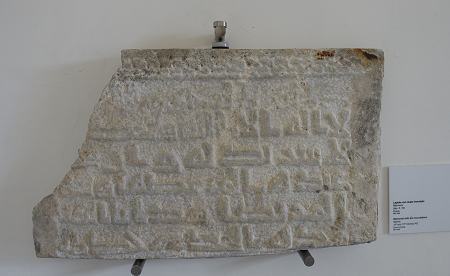
An Arabic inscribed marble in the Evora Museum that dates to the 10th to 12th centuries AD.
But, this was all to change when the Portuguese overthrew their Muslim conquerors. With their newfound wealth from trade with the Orient a few centuries later, they constructed fabulous buildings. One of the most outstanding is the University that was inaugurated in 1559 and devoted to the holy spirit. Almost two hundred years later in 1759, it was closed because the Jesuits, who ran the school, were expelled from Portugal. Happily, it was reopened in 1979 and today is a grand reminder of opulent creations of the Portuguese golden age. The university is known for its azulejos, or tiles painted in cobalt blue.
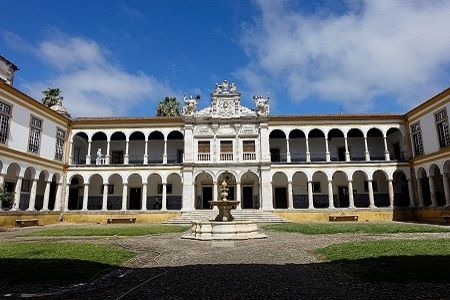
The entrance to the University of Evora.
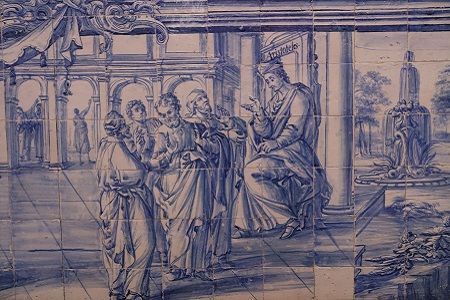
A tile within the University of Evora that represents Aristotle teaching.
And, of course, what would a Portuguese city be without churches? Certainly, Evora qualifies as having its share. There is the cathedral known as the Se, the Church of the Holy Spirit that was part of the university, the Loios Church and others. But it is the San Francisco Church that all want to see. It is distinguished by its Chapel of the Bones. The chapel was created in the 17th century with bones, some say from monks and others from the poor. Whatever the case, the reminder over the doorway is sobering, “We bones that are here await you.”
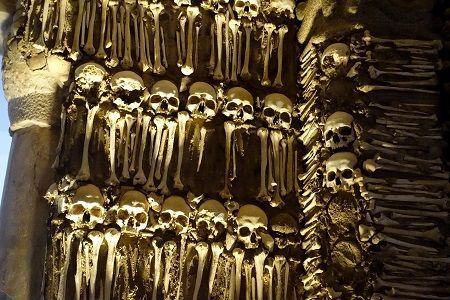
The Chapel of the Bones in the San Francisco Church.
The Evora region even had a life before the Romans. There are monoliths just outside the city indicating a Neolithic settlement.
Also, there is shopping for items not found in the states at all, such as cork products like aprons, purses, and even bikinis. Cork is a major export of the area. Ceramics are also offered, though not as unique.
The local hotels and restaurants are excellent. In addition to the Mara De Ar Aqueducto where we stayed (and liked), there is the Posada Loios that is in the center of the historic city. A restaurant we enjoyed was the Tasquinha do Oliverira that has only five tables and accommodates 12 diners. The owner waits tables and his wife cooks. They have no employees. It was here that we learned about Vinha d’ Erviderira wine from the region. We had the white reserve, which was excellent. A cheese, also from the Alentejo district in which Evora is located, is the Cachopas brand which we enjoyed as well.
It would take a book to cover Evora and its secret passageways leading to hidden gems. For the curious, it is worth the effort.
A short timeline of Evora:
A Neolithic settlement before Christ
A Roman settlement around and about the 1st century AD
A Moorish settlement (Muslims from North Africa) 711 to 1166
The Portuguese Golden Age in the 15th and 16th centuries
*All photography by the author




